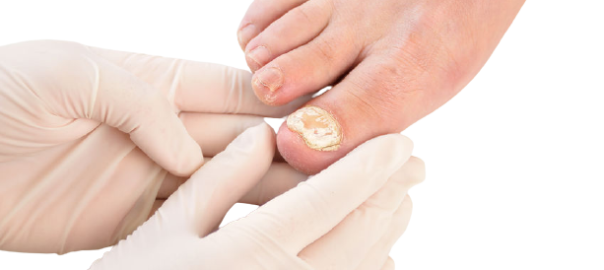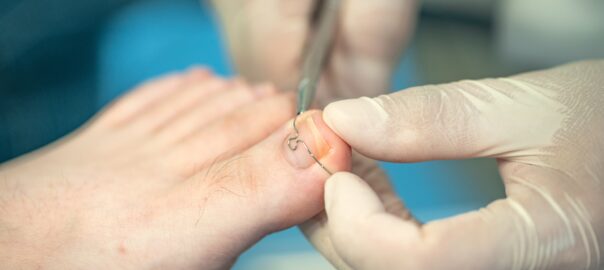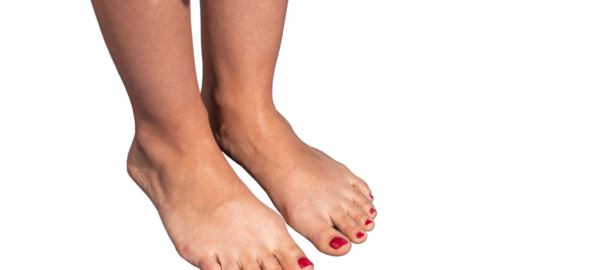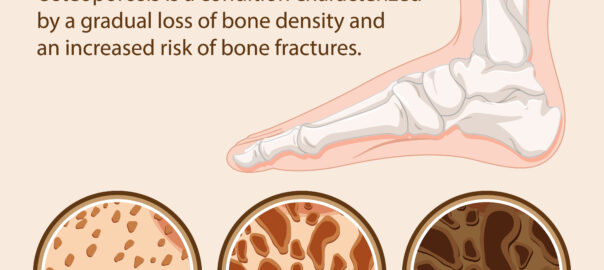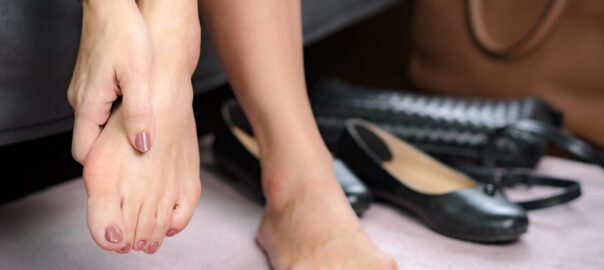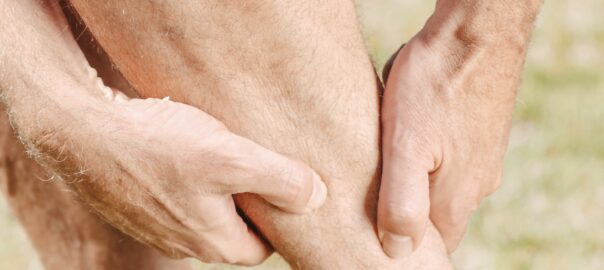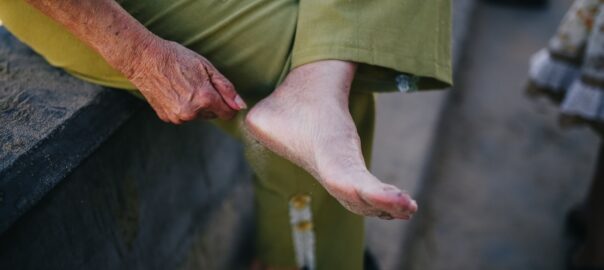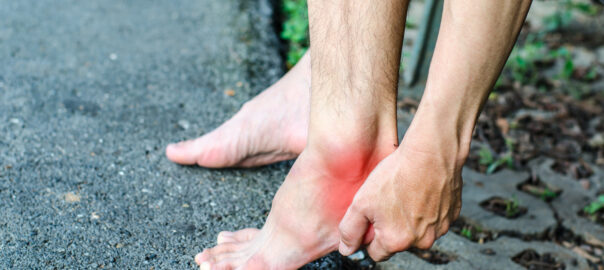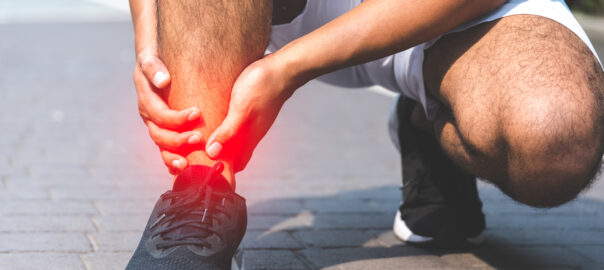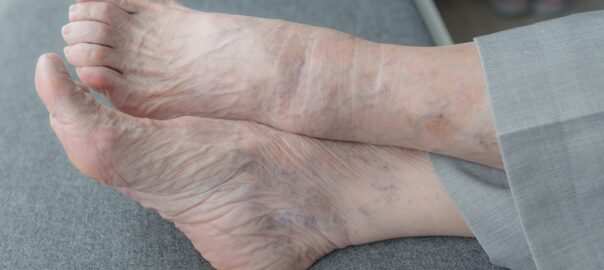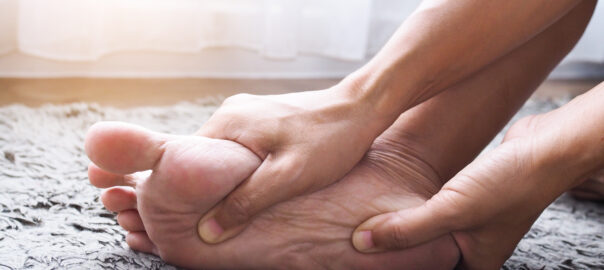Toenail fungus, also known as onychomycosis, is a common condition caused by an overgrowth of fungi in, on, or under the nail. Here are the causes and symptoms:
Causes:
- Fungal Infection: Fungi like dermatophytes or yeasts can enter the nail bed through tiny cuts or separations between the nail and skin.
- Moisture and Warmth: Fungi thrive in warm, moist environments, making places like sweaty shoes or damp socks a breeding ground.
- Poor Hygiene: Not keeping feet dry and clean can contribute to the growth of fungus.
- Injuries or Trauma: Nail injuries can make it easier for fungi to invade and infect the nail.
Symptoms:
- Thickened Nails: The affected nails become thicker than usual, making them difficult to trim.
- Discoloration: Nails may turn yellow, brown, or white. In some cases, they might darken or develop white spots.
- Brittle or Crumbly Nails: Infected nails can become brittle, crumbly, and prone to crumbling or breaking.
- Distorted Shape: Nails may change shape, becoming oddly shaped or warped.
- Foul Odor: In advanced cases, the infected nail might emit a foul odor.
- Pain or Discomfort: In some instances, toenail fungus can cause pain or discomfort, especially when wearing shoes or walking.
Prevention and Treatment:
- Good Hygiene: Keep your feet clean and dry, especially after being in damp or sweaty conditions.
- Proper Footwear: Wear breathable shoes and moisture-wicking socks.
- Avoid Walking Barefoot: Particularly in public places like pools or gym showers.
- Prompt Treatment: If you suspect a fungal infection, seek treatment early to prevent it from spreading.
- Topical Treatments: Over-the-counter antifungal nail creams or ointments may help treat mild cases.
- Oral Medications: In severe cases, oral antifungal medications prescribed by a doctor might be necessary.
- Surgical Options: In some cases, surgical removal of the nail might be considered if the infection is severe or recurrent.
Always consult Chicago Housecall podiatrist for an accurate diagnosis and appropriate treatment plan, as severe cases might require medical intervention.
Call housecall podiatrists at Illinois Mobile Foot Care at 312-998-0974. Our Chicago podiatrists can provide a proper diagnosis based on your symptoms, medical history, and potentially recommend imaging studies or other diagnostic tests to identify the underlying cause and determine the appropriate treatment.





